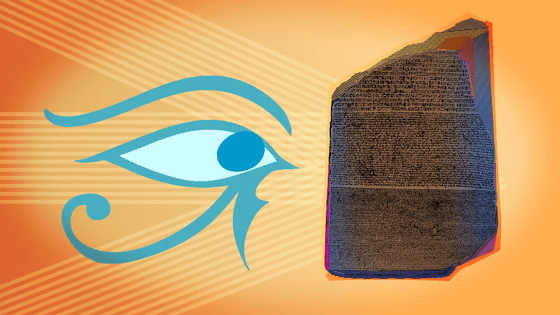A video of an expert lecturing on 'How to write cuneiform' is now available

How to Write in Cuneiform, the Oldest Writing System in the World: A Short Introduction | Open Culture
https://www.openculture.com/2025/09/how-to-write-in-cuneiform-the-oldest-writing-system.html
Irving Finkel Teaches Us Cuneiform - YouTube
The man in the center with the full white beard is Mr. Finkel, an expert on cuneiform writing.

The British Museum has 130,000 cuneiform clay tablets waiting to be deciphered.
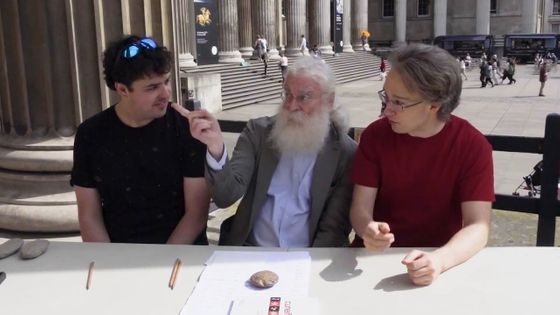
Finkel has a clay tablet with cuneiform inscriptions in it. The round clay tablet was used at a school. Upon closer inspection, you can see that the same pairs of letters are repeatedly inscribed.

The most distinctive feature of cuneiform writing is that it is written by pressing a stick or other object against the surface of the clay to carve it into the clay, which makes it difficult to write curves and strokes like you would with a pencil on paper.

Cuneiform characters consist of only three elements: a vertical wedge, a horizontal wedge, and a diagonal wedge. There are a large number of characters in cuneiform, but they are all made up of a combination of these elements.
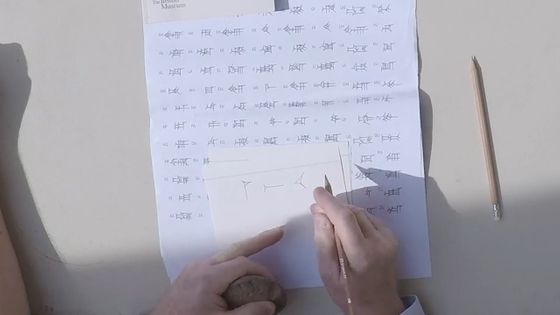
Cuneiform is essentially

This time, I'll try writing my own name. For example, if I write the name 'Matt,' I only think of the sound 'Mat' because the spelling has no meaning in cuneiform, which is a syllabic alphabet.
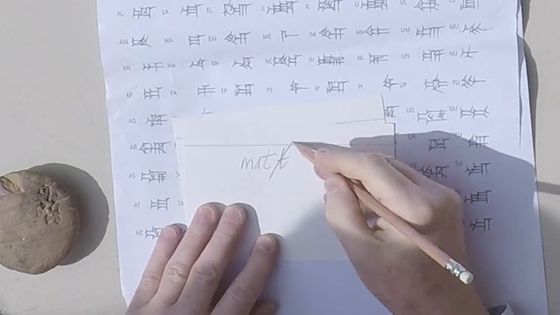
This is a table showing the correspondence between cuneiform characters and sounds.
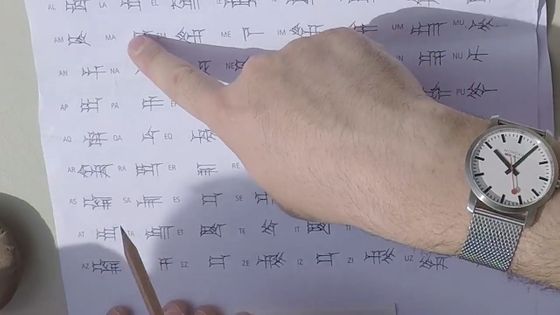
This time, it was decided to write it in two letters, 'MA' and 'AT.' Mr. Finkel writes the cuneiform 'MA.' There is one 'vertical wedge' on the right edge, and three 'horizontal wedges' lined up vertically so as to be in contact with it.

Next is the cuneiform letter 'AT.' There is one vertical wedge on the right edge, three horizontal wedges to the left of that, and two horizontal wedges to the left of those.
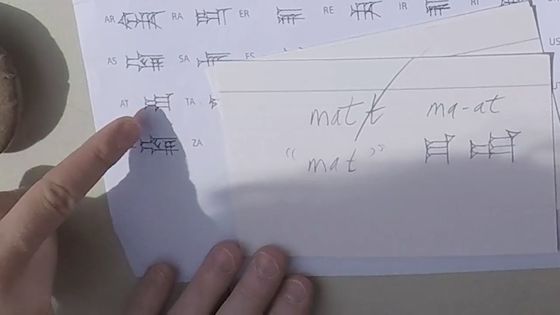
To distinguish whether each stick is a 'vertical wedge' or a 'horizontal wedge,' simply check the bulge at the end of the stick. This is a corner formed when the clay was pushed aside when Mesopotamians pressed
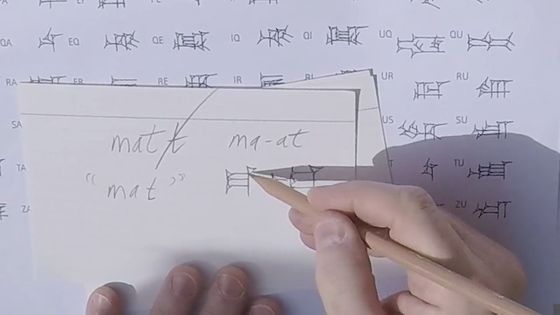
Next, I searched for the cuneiform letters 'TA' and 'AM' that represent the name 'TAM.' I quickly found 'TA,' but it looked quite complicated.

The cuneiform character 'TA' has three vertical wedges on the right side, and two horizontal wedges slightly to the upper left and above them. Another horizontal wedge protrudes from the horizontal wedges, and another longer horizontal wedge is added below them. This is the cuneiform character 'TA.'
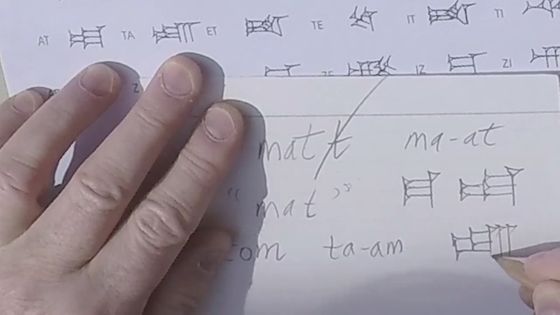
Cuneiform is thought to be a transformation of various symbols, such as bird-like symbols.

Over the course of more than 1,000 years, this symbol evolved into the cuneiform writing shown on the right.
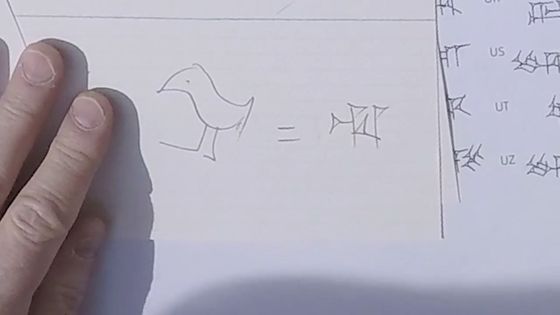
When I looked for the cuneiform 'AM' again, I found a more complex character than 'TA.' At first glance, it seems to include a 'diagonal wedge' that I hadn't seen before.

The cuneiform character 'TA' has two 'horizontal wedges' lined up vertically on the left edge, one large 'diagonal wedge' slightly away on the right side, and three 'diagonal wedges' between them, lined up from the bottom left to the top right.

Now, let's try writing some cuneiform characters. Finkel's preferred stylus is a popsicle stick.

Because cuneiform writing requires sharp corners, popsicle sticks were cut in half to create a right angle.

The trick is to place your thumb on the side and hold it loosely with some room to maneuver.

Press the left edge of the right angle part against the clay plate.
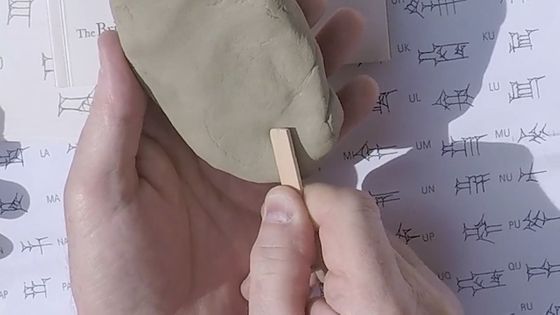
When he released it after a while, a 'vertical wedge' was engraved on the clay tablet.
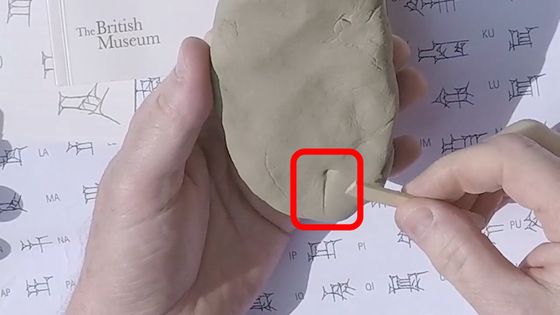
If you want to draw a horizontal wedge, rotate the popsicle stick 90 degrees counterclockwise so that it is sideways. Press the bottom edge of the right-angled part against the clay slab and push it in, shifting it.
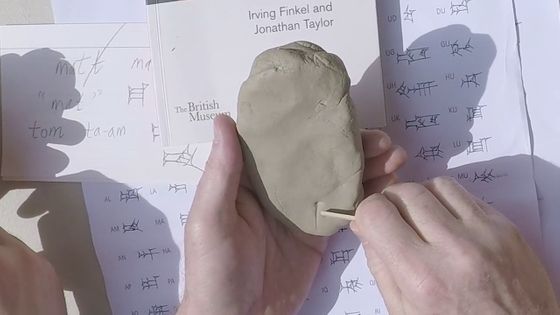
This created a 'horizontal wedge.'

The 'diagonal wedge' presses only the corners into the clay.
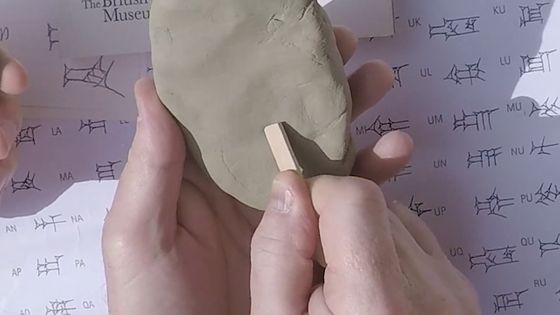
Then, a 'diagonal wedge' was carved into the clay tablet.
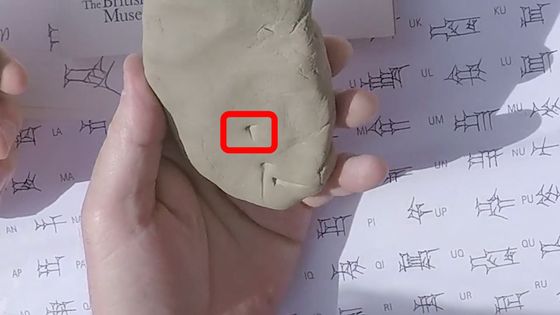
Let's try carving 'AM' into a clay tablet.
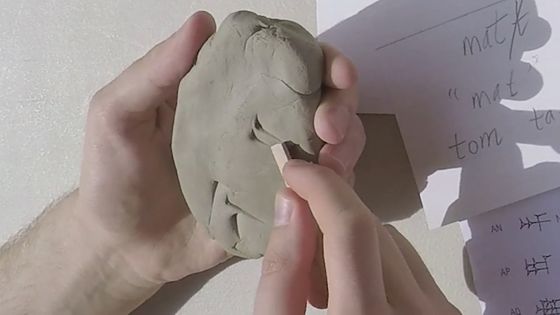
Completed.
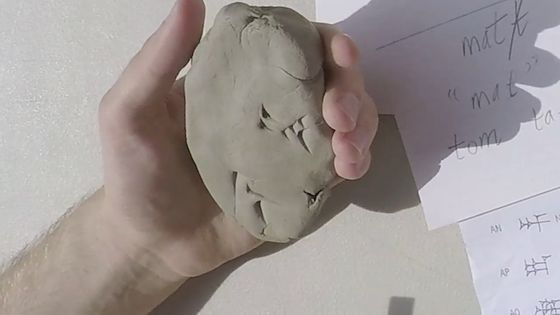
Although written by a beginner, Finkel has assured me that even a Babylonian could read 'AM.'

Related Posts:
in Video, Posted by log1h_ik


